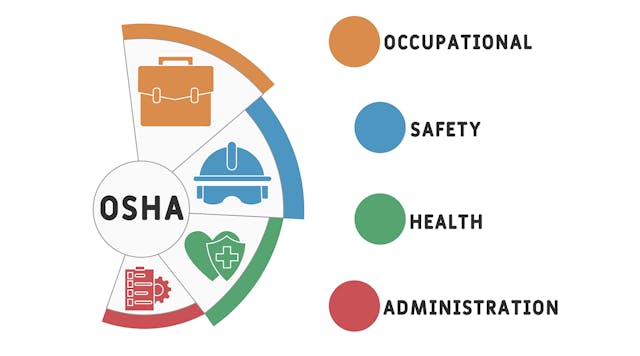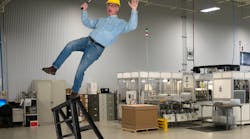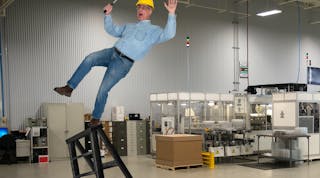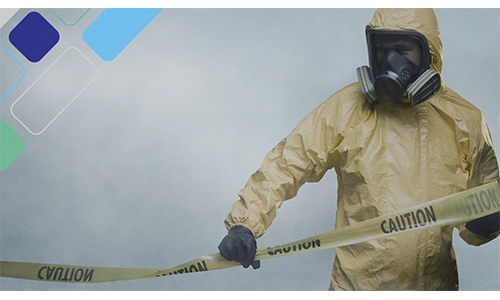Walk onto any construction or industrial site, and you won’t have to look hard to see potential health and safety hazards. You may see flammable materials, cluttered walkways and inadequate protective gear. You may even see workers taking shortcuts, such as climbing onto a pipe rack, or operating machinery that they may not be qualified to use.
For some companies, safety can get lost in the shuffle. There are the pressures of balancing project timelines and productivity, rising material prices, and labor shortages. All of these obstacles make it challenging for safety to get the time, attention and budget it deserves.
Even if your company starts every day with a safety meeting and keeps track of safety statistics, making sure there are enough workers on-site may take precedence over ensuring the proper skill levels and certifications are in order. As a result, real-world safety practices may be lacking at companies that track safety, fatigue thresholds, equipment usage and near-misses. That can spell disaster, but there are ways technology can help safety professionals work smarter, not harder.
Here are four ways safety technology can help keep workers safe.
Data and Analytics Reporting
Most companies use a variety of safety tech solutions to keep teams safe on industrial jobsites. But they might not see how all the incongruous pieces can be used to create a harmonious bigger picture, one where real-time data and analytics can help employers and contractors streamline operations while also improving worker safety. For example, manual data entry can make information difficult to access, retrieve and share, which can jeopardize worker safety.
Digital solutions can automate alerts and provide real-time insights into:
- Proof of presence – knowing who is inside the plant;
- Skill reports – knowing who is new to the site or the supervision ratio of a crew; and
- Emergency events – quickly accounting for contractors and employees at muster stations or rally points.
These tools can increase safety by delivering real-time visibility into everything from non-compliance issues to missed badge in/out events, which can help companies identify potential safety risks proactively.
"No one ever wants the worst-case scenario: people getting hurt on the job. But improving safety for everyone often comes down to how companies leverage data and analytics to reinforce a positive—not punitive—safety culture."
For example, if you use cloud-based software to connect proof of presence to fatigue thresholds, you can generate automated email alerts when workers are nearing their maximum hours worked. This data can prevent incidents caused by exhausted workers working too many consecutive hours in a shift and potentially taking shortcuts.
Fatigue Management
Fatigue and overtime go hand in hand at any facility or project. Third-party contractors may be eager to work as many hours as possible to rack up overtime pay. This can be a recipe for dangerous and costly behavior, not to mention injuries.
Consider these facts. Working 12 hours per day comes with a 37% increased risk of injury, according to the Occupational Safety and Health Administration (OSHA). Fatigue-related, health-related lost productivity time at work costs employers an estimated $136.4 billion annually.
Some workers may not tell supervisors if they are exceeding company or government fatigue safety protocols. This suggests a bigger issue: a flawed incentive program that values profit over safety, which should never be the case. If your facility or project is using spreadsheets to keep track of hours, it is a nightmare to know who has exceeded or is close to exceeding the maximum number of hours allowed. Relying on manual headcount and Microsoft Excel means safety can easily slip through the cracks.
As a result, everything around fatigue management—from tracking the hours worked by each employee to ensuring adequate breaks or down time to monitoring the number of consecutive days worked—becomes reactive.
On the other hand, the right contractor data and spend management software can help companies manage fatigue thresholds. Automated email alerts can alert managers so there is proactive notification and monitoring of employees’ timecards. For example, data can show if a worker has been on the job for 14 consecutive hours in a day or for 14 consecutive days in a row.
Using real-time access gate data, on-site time can be tracked and flagged so lives and companies are safer. This allows managers to proactively mitigate risk by reducing dangerous overtime shifts or by sending someone home before an accident occurs.
Preventative and Routine Maintenance
Safety risks and management challenges become exponentially more prevalent when a facility doesn’t have visibility into productivity metrics, safety compliance and equipment management.
By leveraging everything from sensors to machine learning, technology can help companies monitor equipment and systems in real-time to detect any anomalies or patterns that would predict potential failure. This approach allows maintenance teams to intervene before a safety issue arises, thereby preventing accidents and minimizing downtime.
In addition, Internet of Things (IoT) devices and sensors can be deployed to monitor critical infrastructure remotely. This helps safety professionals expand their reach to another building, plant or out in the field—all with the click of a mouse. Remote monitoring also reduces the need for physical inspections in hazardous environments.
The right digital automation software can collect, clean and analyze data to make it more usable and valuable via cloud-based software. Automation systems help reduce the risk of human error by taking over tasks that are repetitive, monotonous or require a high level of accuracy.
It is also important to know if the right craft worker is qualified to run the equipment and where the equipment is located on the jobsite. When companies use automated solutions, they have visibility into where all workers are on a jobsite in relation to where equipment is located. They can also see whether the equipment is idle or being used at any given moment, which supports streamlining routine and preventive maintenance services by identifying when equipment is available to be worked on without disturbing the project’s workflow.
Location Visibility
The goal of any company is to ensure everyone goes home safely at the end of their shift. Having visibility into who is where on a jobsite is critical. This is especially useful if your site is a 700-acre plant with a dozen rally points where employees muster in a safety incident, such as a fire.
But companies don’t know what they don’t know, including who is working on-site without badging in. Off-site work and missing badge in/out events have the potential to become prime candidates for unsafe situations. You never want workers failing to badge into a facility or letting someone in through a different gate or side door.
With technology, you can understand your daily site needs and ensure you have the head count and man power to manage it. This is particularly helpful when workers are in hazardous locations because technology can show where a safety inspector should be located to ensure safety is prioritized.
Being able to see your daily on-site workforce by vendor, skill and headcount can be a game-changer. You can ensure work is completed, plus you’ll know who is on-site in case of an emergency.
If you manually account for your workforce, this can be dangerous in an emergency. Trying to call or radio and ask about each person at a muster station or rally point, then comparing and matching names to a daily force report can take hours. In many cases, you may have already handled the emergency by the time you’ve accounted for all the workers.
With an automated technology solution, you can know within minutes who has exited the facility and who is at which muster station. Having access to this data is critical in a situation where conditions are rapidly changing or worsening. For example, if the wind shifts direction during a fire, you may need to quickly move workers to another location in your facility.
A Safer Jobsite
Businesses can use data and analytics to predict and prevent the root causes of safety incidents. Some of the ways companies can benefit include:
- Protect restricted and high-risk areas of the plant;
- Increase awareness and safety procedures when high-risk equipment is in use on-site or remote work is performed;
- Tie into weather data sources to avoid scheduling work during high-risk events and eliminate that lost time;
- Understand ratios between critical equipment on site and the number of safety personnel and permits needed;
- Know who is inside the plant and where they are located; and
- Know how many entry-level craftspeople are on the job.
No one ever wants the worst-case scenario: people getting hurt on the job. But improving safety for everyone often comes down to how companies leverage data and analytics to reinforce a positive—not punitive—safety culture.
Ultimately, the right digital technology helps to inform owners, contractors, safety professionals and workers. When everyone has transparency into hours worked, equipment usage, and worker location, it levels the playing field, keeping everyone on the same page. Everyone wants safe workplaces, and technology can be leveraged to decrease risk and maintain a healthier environment.
Ken Naughton is president of Management Controls, and he has been with the company for 13 years. Previously, he worked in the oil and gas industry for over 25 years.





































































